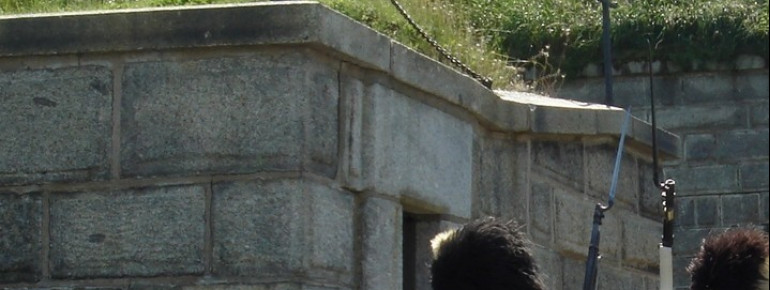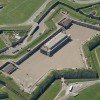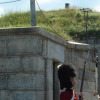Contents
Description
The Halifax Citadel Hill has a long tradition to look back to. In 1749 the first fort was built here, which can still be visited. It is one of the buildings that was built in the years afterwards. The place the fort was built on played an important role for strategic aspects in the rivalry between France and England, but the fort could never be captured by the enemy side.
The history of the fort hill had four different periods of construction. The first fort was built in 1749 during the war between France and England and the battle with indigenous tribes. A war was declared because the British had breached an agreement. During the American Revolution the fort was enlarged in order to protect it from French and American attacks. Due to countless other attacks in the following years the fort had to be rebuilt several times.
The fortress, as it stands today, was rebuilt in 1856 and has since remained unaltered. It took up to 28 years of construction until it was finished and ready to provide a shelter from American air raids. In that time, the citadel was also given its star formed shape as it was modelled on the citadel in Quebec.
Towards the end of the 19th century, the fort was then merely used for defence planning purposes for far-off areas. In both world wars Forth George, as the Halifax Citadel is also known among the citizens, was used as a jail to keep war prisoners captive. After the wars, it seemed there was nothing the fort could be used for any longer. In the years to follow, it slowly but surely became a crumbling ruin until they began to restore it from 1956 on. Gradually, the character of a museum had begun to evolve.
Historical Information
The Halifax Citadel Hill has a long tradition to look back to. In 1749 the first fort was built here, which can still be visited. It is one of the buildings that was built in the years afterwards. The place the fort was built on played an important role for strategic aspects in the rivalry between France and England, but the fort could never be captured by the enemy side.
The history of the fort hill had four different periods of construction. The first fort was built in 1749 during the war between France and England and the battle with indigenous tribes. A war was declared because the British had breached an agreement. During the American Revolution the fort was enlarged in order to protect it from French and American attacks. Due to countless other attacks in the following years the fort had to be rebuilt several times.
The fortress, as it stands today, was rebuilt in 1856 and has since remained unaltered. It took up to 28 years of construction until it was finished and ready to provide a shelter from American air raids. In that time, the citadel was also given its star formed shape as it was modelled on the citadel in Quebec.
Towards the end of the 19th century, the fort was then merely used for defence planning purposes for far-off areas. In both world wars Forth George, as the Halifax Citadel is also known among the citizens, was used as a jail to keep war prisoners captive. After the wars, it seemed there was nothing the fort could be used for any longer. In the years to follow, it slowly but surely became a crumbling ruin until they began to restore it from 1956 on. Gradually, the character of a museum had begun to evolve.
Interesting facts
- Halifax Citadel Hill (Fort George) is among the 3 best rated Tourist Attractions in Canada.
- The day pass at Halifax Citadel Hill (Fort George) is CAD13.25 making it one of the 3 cheapest tourist Attractions in Canada.
How to get there
The citadel is sited on a little hill on the peninsula of Halifax. The fort is in sight from almost any angle of Halifax, especially if you keep an eye out for the clock tower, which is placed in the vicinity of the fortress.
On foot
If you desire to walk to the citadel, it's best to start directly by the riverside and turn into any street leading towards the city centre. Keeping an eye on the clock tower, continue walking the steps uphill until you get to the entrance of the citadel.
By car
You can as well get here by car. Follow the road signs in the direction of “Halifax Downtown”. You will then have to decide between two optional ways to get to the fort. Whichever you go for, both lead to the fort. You can either follow the Sackville Street or you turn into the Rainnie Drive.







